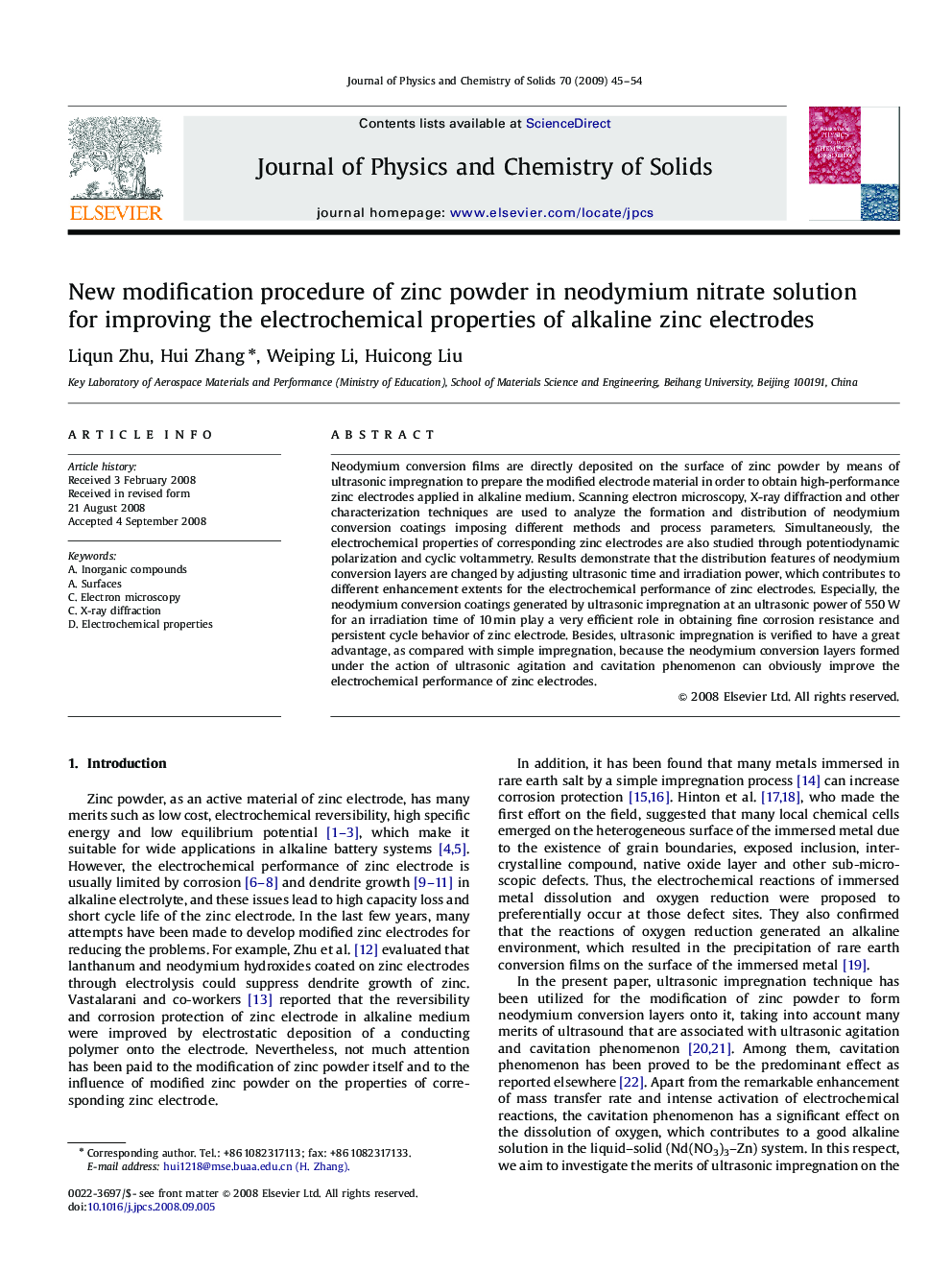| Article ID | Journal | Published Year | Pages | File Type |
|---|---|---|---|---|
| 1516909 | Journal of Physics and Chemistry of Solids | 2009 | 10 Pages |
Abstract
Neodymium conversion films are directly deposited on the surface of zinc powder by means of ultrasonic impregnation to prepare the modified electrode material in order to obtain high-performance zinc electrodes applied in alkaline medium. Scanning electron microscopy, X-ray diffraction and other characterization techniques are used to analyze the formation and distribution of neodymium conversion coatings imposing different methods and process parameters. Simultaneously, the electrochemical properties of corresponding zinc electrodes are also studied through potentiodynamic polarization and cyclic voltammetry. Results demonstrate that the distribution features of neodymium conversion layers are changed by adjusting ultrasonic time and irradiation power, which contributes to different enhancement extents for the electrochemical performance of zinc electrodes. Especially, the neodymium conversion coatings generated by ultrasonic impregnation at an ultrasonic power of 550Â W for an irradiation time of 10Â min play a very efficient role in obtaining fine corrosion resistance and persistent cycle behavior of zinc electrode. Besides, ultrasonic impregnation is verified to have a great advantage, as compared with simple impregnation, because the neodymium conversion layers formed under the action of ultrasonic agitation and cavitation phenomenon can obviously improve the electrochemical performance of zinc electrodes.
Keywords
Related Topics
Physical Sciences and Engineering
Materials Science
Electronic, Optical and Magnetic Materials
Authors
Liqun Zhu, Hui Zhang, Weiping Li, Huicong Liu,
